From the cook to the artist

People & tales
From the cook to the artist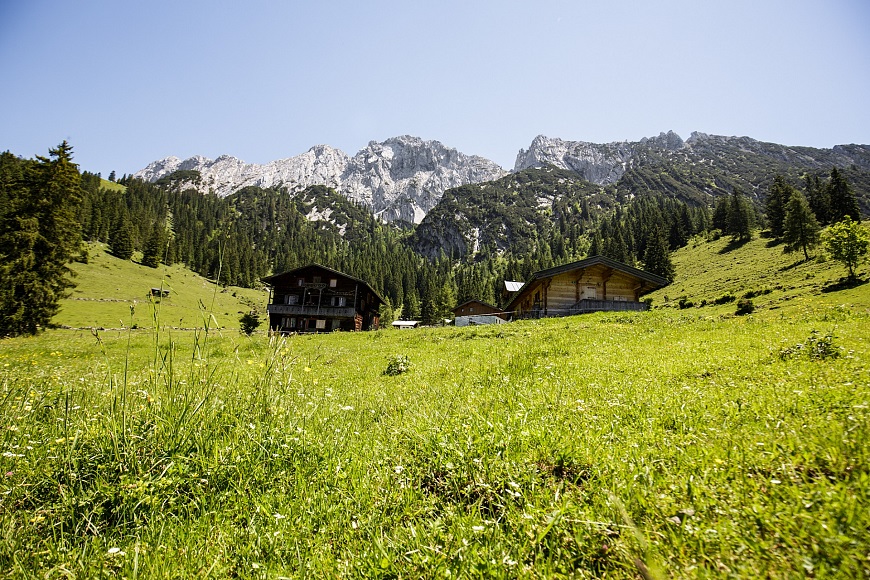
Actually, Georg Strasser should be using the sunny day to make hay. But he takes some time out for us. It's important to him to give us an insight into Alpine farming. We meet the chairman of the agricultural community on the dot of 1:00 pm in the centre of Kufstein. From there we take steep forestry roads toward the Wilder Kaiser.
"Most people aren't allowed to drive here in the nature reserve, but I have a special permit, explains Georg. It feels like we're only going 10 km/h as we chug uphill for half an hour, through shady forests into pure nature – it's a stark contrast to the city. During the drive he explains the background of his farming community: "There are a total of 12 farmers who founded the agricultural community. In summer the cows and calves come up to the alm, and are looked after by three workers."
Once we arrive at the high plateau a wonderful view of the Wilder Kaiser opens up. "Over there, directly under the Scheffauer, are our alms. We farm a total of 300 hectares of land, 200 of which are used as grazing areas." Georg points out the agricultural land on the opposite side as he speaks.
We continue driving along a narrow forestry road to the alm where the milk cows spend their summer. This is where Stefan looks after "his" 72 cows. After a warm welcome we accompany the milkers into the stall: "When it's this hot the cows are in the stall during the day and at night I let them out onto the pastures." The animals raise their heads curiously, and lean out towards us. But Elsa, Lilly, Cindy and the others don't let us disturb them, and look happy where they are.

The day starts early for Stefan: "I have to get up at 4:00 am, have breakfast and an hour later I collect the animals from the pasture. After they eat the concentrated feed they are milked, as the milk is picked up at 8:30 every morning by Tirolmilch. In the afternoon I check the water points and the fences, feed the animals again at 3:00 pm, start the milking machines and take the cows out to the pasture again at 6:00 pm", says the milker.
Stefan enjoys working on the alm. You really notice it: "I've been in the mountains for the past 14 summers. I love it up here, even though it can be quite challenging sometimes. You're really on your own up here, the animals are in a different mood every day and the weather isn't always as nice as it is today", grins Stefan. He naturally knows all his cows by name, and knows which ones are likely to cause trouble: "Each cow has its own personality. Cindy, for example, often kicks during milking, and Elsa is sometimes a little rebellious", says Stefan.
Every cow has its own nameplate: "At the top is the farmer's name, then the name of the farm, and at the bottom the name of the cow. Each cow also has its own bell. This is very important when visibility is low as it helps me find the cows. Each bell has a different sound, and I know exactly which sound belongs to which cow", says Stefan. We're impressed! It would be a good bet for "Wetten Dass..." (Wanna Bet?).
After our interview the milker offers us a glass of fresh milk – directly from the cooling container. It tastes delicious. "The cows don't get any silage, only concentrated feed and hay. You can taste the difference, and it's good", explains Stefan, before we continue our trip.
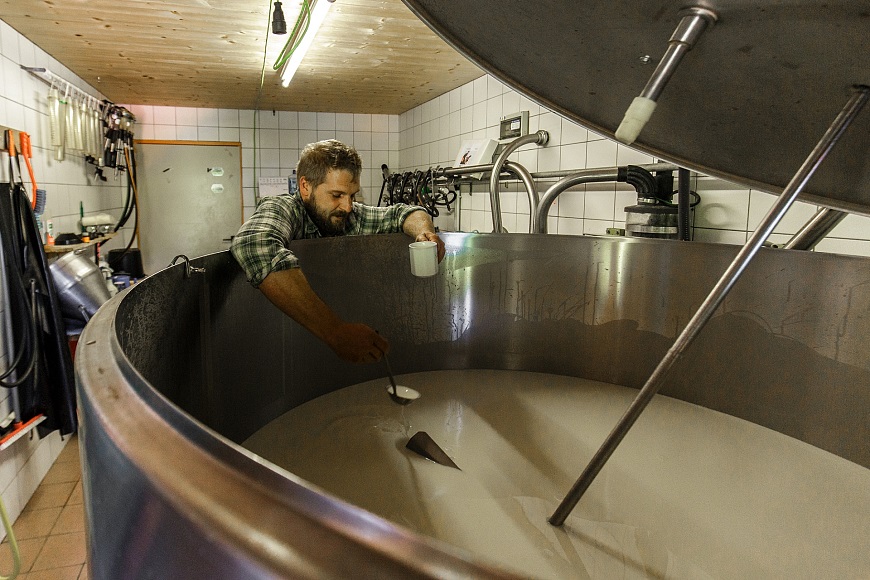
Only a few minutes from Stefan's workplace is Steinberghütte, where Maria looks after the young cattle and, more recently, also hiking guests. "Grias Eich, welcome to my alm", the lively animal lover greets us. Hikers have made themselves comfortable on the benches in front of the hut, and are enjoying a snack plate and cold shandy in front of the imposing peaks of the Wilder Kaiser.
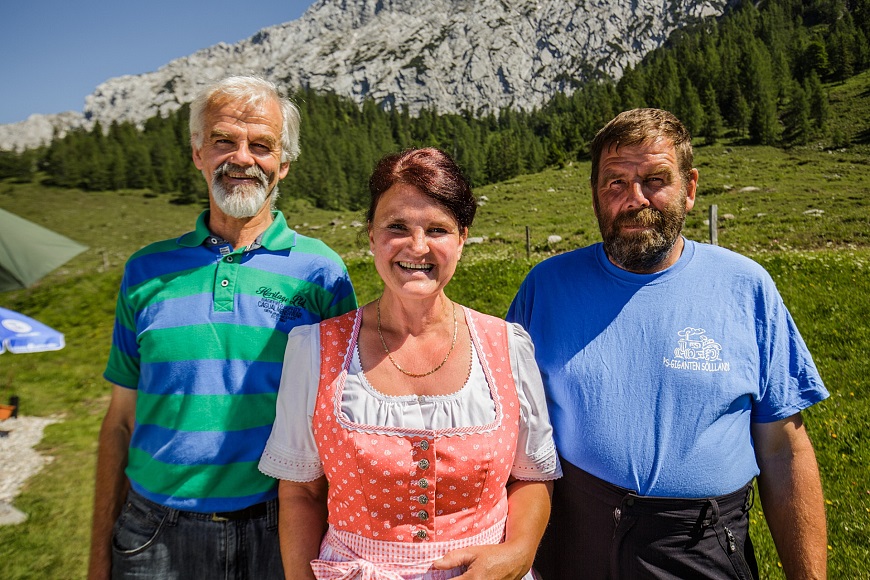
Our group gets bigger and bigger. An alm worker, Sepp, joins our table as Maria looks after her guests. "My office is the meadows and alms. I continuously check the 500 fences and numerous water points for the cows. The roads also need to be clear for the transport of milk. This needs to be checked regularly", explains Sepp. Georg adds "He's an extremely important worker for us, and knows the area better than anyone else".
Tip: Steinberghütte is a very popular excursion destination for hikers. From the top station of the Kaiserlift you can reach the idyllic hut in around 1.5 hours via the Gamskogelrunde.
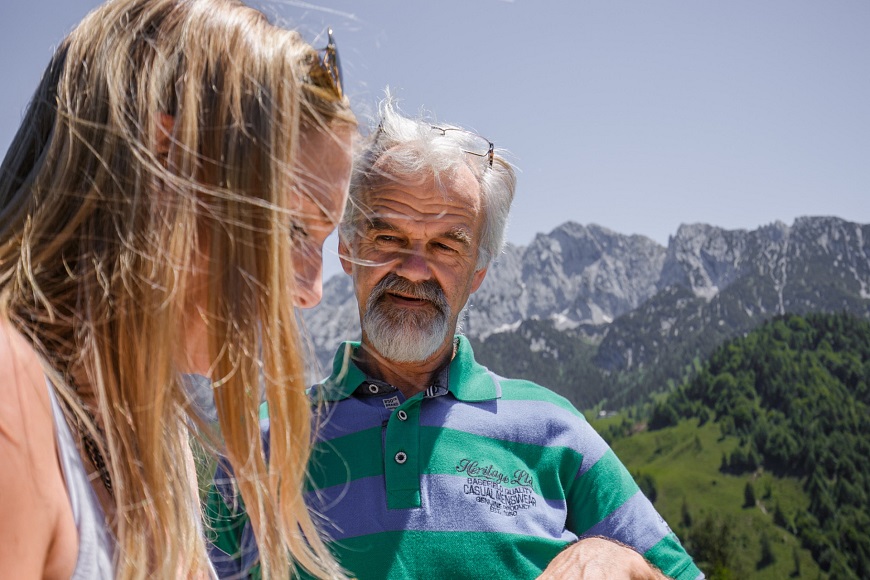
Maria comes to our table with a full tray. "This is a 'Hollerpunsch', you really should try it", she says as she offers us her special summery drink made from elder flower, mineral water, lemon, vinegar and a little yeast.
The friendly "hostess" explains why she enjoys working on the alm: "I love being surrounded by animals and people. Even 30 years ago I was constantly up on the alm, until I met my husband up here. Then I moved back into the valley, had three children and brought them up. But I always knew that I wanted to come back to the alm!” says Maria. A dream that she's now fulfilling. "My children are all grown up and have their own families. They support my choice." The sparkle in Maria's eyes as we talk to her reveals her passion: she's happy up here.
Maria looks after 97 calves every day. And not only that: in the afternoon at Steinbergalm you can enjoy fresh snack plates and cool drinks. Maria's alarm goes off at 5:00 am: it's time to bake the bread. In the mean time she also collects the calves from the pasture, brings them to the stall and feeds them. After around 2 hours the cheerful hostess puts on her dirndl - after all she wants to look nice for her guests! After the preparations in the kitchen, like cutting the bacon, preparing the bread and cooking the eggs, the first hikers start arriving. But you won't find a menu here: "I don't need a menu, I'd prefer to talk to people", grins Maria. After 5:00 pm she heads back to the stall to muck it out, clean it and let the calves out. "Of course if hikers arrive during this time they won't go thirsty", says Maria. As well as the logistical challenge of balancing the stall and hospitality, she also has a big responsibility to the animals. "If a calf is sick then you have to help it with home remedies and make sure that it gets healthy again. If that doesn't work I call the vet." says Maria, who can hardly wait to show us the calves.

Slip off the dress shoes and put on the rubber boots: now it's time to go into the stall. Maria proudly shows us her calves. She gently taps Elsa on the flank: "This is my favourite." Elsa nuzzles up to Maria. One of the nicest moments for Maria is in autumn, when the animals leave the alm: "On the day that they go down into the valley again the animals are beautifully decorated. Last year the nursing home residents made the beautiful decorations. We give thanks for a good summer on the alm, and get ready for the winter. Of course I leave the alm with mixed feelings. I love being up here, but I also look forward to being with my family. And after all, I know that it won't be my last summer on the alm" laughs Maria.
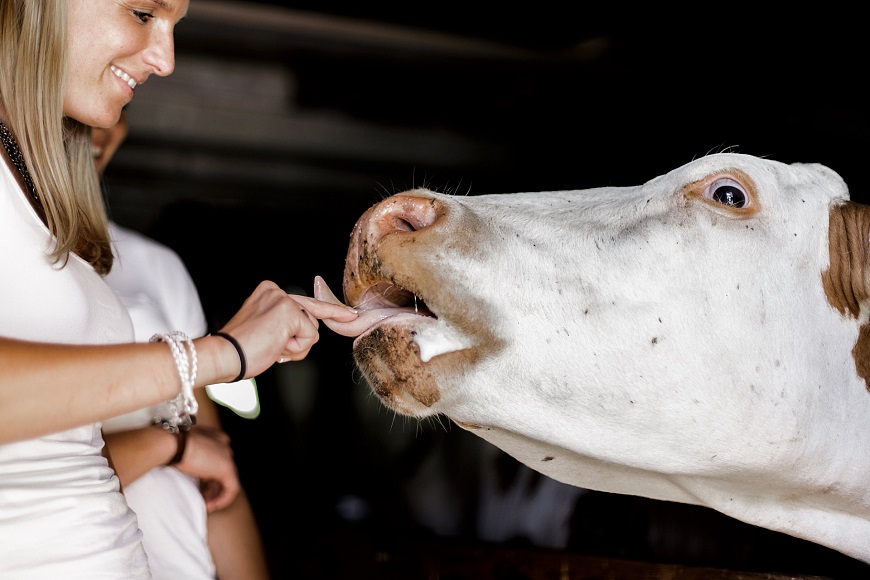
As we walk to the car and enjoy the beautiful view of Kaiser Mountains' rugged crags for the last time, we look back on the day. It's beautiful up here on the alm: the sun is shining and the clocks tick differently up here when you're surrounded by nature. The friendly people, who passionately enjoy their jobs, the idyllic nature and the wonderful air impressed us. Georg Strasser slowly drives us back into the valley, after plenty of unforgettable experiences and with lots of new information. One thing is for sure: it's certain not to be the last time!
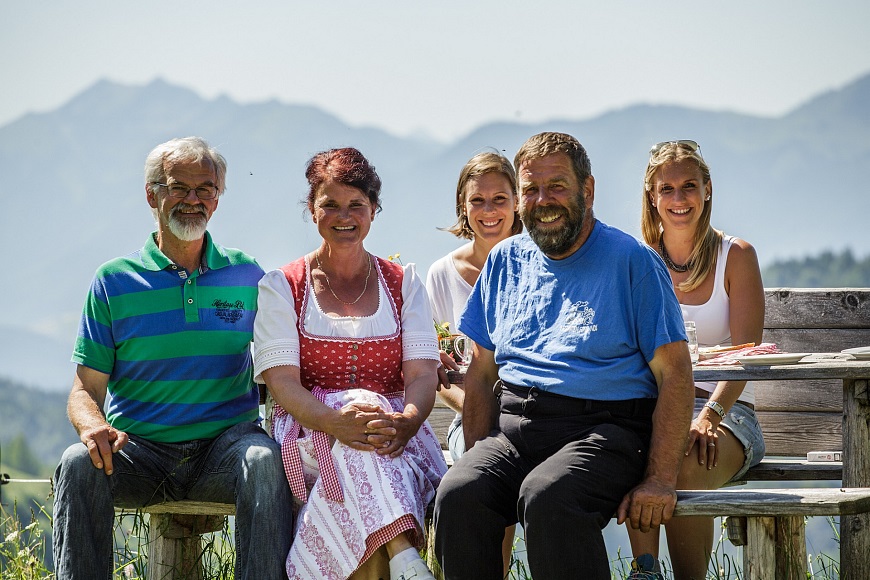
1 Comment (s)
lxbfYeaa lxbfYeaa
31.05.2024 - 19:40 Time
20